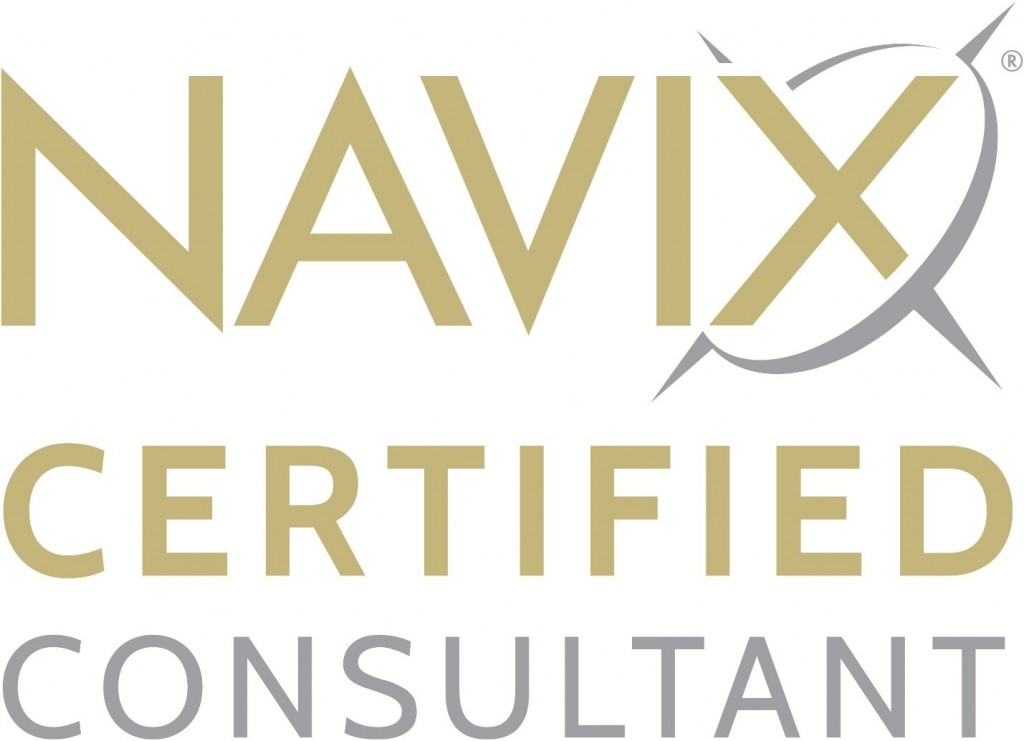
Posts Tagged "Exit Strategy"
Why Your Company’s Profitability is Not the Same as Exitability
By: Patrick Ungashick

It’s not difficult to evaluate your company’s profitability—it’s right there, in black and white, in the financial statements. This clarity is beneficial, because company profitability is arguably the single most critical area of business performance. As the saying goes, revenue is vanity but profits are reality. So when you one day want to exit, the more profitable your business, then likely the more valuable it will be at your exit.
But just because your company is profitable, does that mean it is exitable? Admittedly, I made up the word “exitable,” but for a good reason. An exitable company is one that is well prepared for the owner to exit and will fulfill the owner’s business and personal exit goals. Many companies are profitable but not exitable. If your company has any characteristics that limit its exitabilty, when you go to exit you will find the path more difficult than you expected, the company less valuable than you desired, or at worst your exit completely blocked. Moreover, if you only find out all these issues right when you want to exit, it will be too late to do anything about it.
Profitability and exitability are not the same. There are a surprising number of ways that businesses can grow and operate profitably, without necessarily being exitable. Here are four common situations where this can occur:
Owner Dependency
The first common limitation on exitability is owner dependency. If your business is dependent on you, or any other owners, to operate and grow profitably, this typically limits exitability. The company’s value cannot walk out the door when you do. It’s also ironic because your company probably would not be what it is today if you had not worked as hard as you have up to now, perhaps over many years. It’s great to be good at what you do, but if your company is losing an essential employee when you exit, that undermines exitability. It’s not enough either to say that the company could manage to survive without you. It has to be able to thrive without you. Buyers want to know that the business’s profits will not slow down nor go away when you do.
Customer Concentration
The second common limitation on exitability is customer concentration. This statement may surprise you because customer concentration is usually a byproduct of a job well done. Your company may have served one or a few customers well, and they’ve responded by sending more and more business your way. Then, one day, you look around, and 20%, 30%, 50%, or more of your revenue and profits comes from these few customers. These customers might be generating many profits, but customer concentration usually limits exitability. If you intend to sell your company one day, your future buyers likely won’t have longstanding relationships with these customers, creating risk for them. Buyers often pay less for companies with customer concentration or pass on purchasing that company altogether. Customer concentration thus becomes a serious limitation on exitability, no matter how profitable those customers may be.
Co-Owner Goal Misalignment
The third way many companies experience limited exitability is if they have co-owners who are not in alignment with one another. We did a research study a number of years ago and it revealed that 7 out of 10 small to medium-sized privately-owned companies have ownership shared among two or more co-owners. We often see co-owners who are in strong alignment with one another for years and sometimes even decades while they are working together to grow the business because they share one clear priority, which is to increase revenues and profits. The problem arises when one or more of those co-owners get closer to exit because the goals often change and the co-owners find themselves no longer in alignment. For example, one co-owner may want to sell now, while another wants to wait. Alternatively, one co-owner may wish to sell for a lower price, while another wants to keep growing the company and hold out for a higher price. Whatever the situation, when the goals change, the co-owner alignment changes, and often the co-owners don’t even realize it’s happening until close to exit, at which point it can completely undermine a company’s exitability. No matter how profitable your company may be, if the co-owners are not in alignment, exitability will suffer.
Unclear Plan for the Future
The fourth way companies experience reduced exitability, regardless of profitability, occurs if the company lacks a clear, compelling plan for future growth. For a company to be highly exitable, it must offer a buyer or successor a credible and compelling vision for how that company will grow going forward, after your exit. How profitable the company has been up to this point is nice, but what the company is expected to do in the future drives value and exitability.
Many profitable companies don’t have the systems and habits that help create this compelling plan for future growth. For example, the company leadership team might not do robust strategic planning, or perhaps they do not diligently measure monthly or quarterly performance against financial budgets and operational benchmarks. Without experience doing effective strategic planning, and without a clear track record of being accountable for achieving business goals, it may be unclear to the future buyer or successor whether or not this company can sustain its future growth after your exit. This lack of management practices undermines exitability, even if the profitability has historically been excellent.
Conclusion
These are just four situations that can limit a company’s exitability—and they are prevailing. Growing profits, and getting a company ready for exit, are two different needs. To learn more about preparing your company for exit, consider this educational webinar or contact us with your exit planning questions.
If you have a quick question coming out of this article or, if you want to discuss your situation in more detail, we can set up a confidential and complimentary phone consultation at your convenience contact Tim 772-221-4499

Seven Situations to Consider Bringing in an Outside Investor
By: Patrick Ungashick

You believe your business would grow faster, if you had more cash.
Or, perhaps you’d buy out that partner who’s not in sync with the company’s direction, if you had more cash.
Or, perhaps you’d take some cash home to diversify your wealth and sleep better at night—if only you had more cash.
Whatever your specific need, perhaps you’d do it—if you had more cash. That’s just the thing though. How do you get more cash to accomplish your business needs, without giving up too much in return, or taking on more risk than you should? Most business owners, at some point, will struggle with this question.
If a need for additional capital is identified, often owners automatically turn to debt to meet the need. Debt avoids dilution. In many cases securing outside debt is easier—one phone call to your commercial banker, and shortly thereafter you have a term sheet in your hand. Finally, owners know that with debt they are not sharing leadership and decision-making control with outsiders.
Yet, there are situations where investigating bringing in outside equity, either as an alternative to debt or as part of combined debt and equity approach, may make sense. We see seven common situations where raising outside equity may be a good fit to meet the needs of the business and its owners:
1.You can bring in outside equity without giving up control. It’s more myth than fact that if you bring in outside investors, you must give up control over your business. While some investors want control, many will consider minority investment situations, and some even prefer it. Most investors will require certain protections, often called “super-majority rights,” that require unanimous consent for the most critical decisions, such as selling the entire company, raising additional debt, or bringing in other investors. But the day-to-day operations and decisions can remain yours entirely in many situations.
2.You have a proven business model with no serious limitations to scalability. If this is accurate, then the more fuel into your company engine, the faster and farther it may go.
3.You have one or more co-owners who are not on the same page with regards to your company’s plans and direction, and buying them out will remove this obstacle and source of friction. With outside capital, you may be able to put cash on the table and buy them out quickly and at an attractive price.
4.You are racing against the competition, and speed to market and/or rapid gain of market share will define success or failure. If this is the case, then you may need to secure sufficient cash to win the race.
5.Your equity partners bring more than just cash to the table. If your investors can bring you market experience, leadership skills, transaction knowledge, industry contacts, or growth opportunities, then you may be getting a bargain. For example, many investors will require a certain number of seats on the Board of Directors. You cannot underestimate the value of having a formal board to help with financing, recruiting, financial and market analysis, project feasibility analysis, legal issues, and exit timing.
6.You desire to “take some chips off the table,” and outside money will allow you to diversify your personal net worth and gain liquidity outside the company. Many owners spend years and sometimes decades highly illiquid. Eventually, this causes most owners personal stress and anxiety—for a good reason. Bringing in outside investors may create personal liquidity, which not only reduces risk but for some owners infuses them with new excitement about taking the company to the next level, given their improved financial security. Bringing in outside investors often eliminates the need for personal guarantees, further reducing the owners’ risk.
7.You have a strong leadership or management team, some of whom want an equity stake in the company. Usually, these leaders and managers lack personal capital to buy into the business. Outside investors can help the management team to buy in, again without requiring taking control. Often we see this done with the current owner maintaining some ownership in the business, allowing him or her to gain liquidity while remaining involved in the company going forward.
There can be additional benefits to bringing in outside equity. One is the potential of increased credibility at your exit. If, after raising outside equity, you later decide to sell the entire company, many buyers have a perception that the business is more “buttoned-up” because outside equity investors have been involved.
While there are other reasons to consider bringing in outside equity, these seven are perhaps the most common situations where outside equity could be a game-changer for you and your company. If you face any of these situations, take an objective, comprehensive review of your company’s capital needs, and then determine the most effective capital strategy—including outside equity when advantageous.
To learn more, watch this webinar on how to “Cash Out Without Walking Out” or contact us with your questions.
If you have a quick question coming out of this article or, if you want to discuss your situation in more detail, we can set up a confidential and complimentary phone consultation at your convenience contact Tim 772-221-4499.

Why There are Only Four Exit Strategies and the Danger of Not Knowing Yours
By: Patrick Ungashick

To the surprise of many business owners, there are only four ways to exit from a company. One day, you will either pass your company to family members, sell to an outside buyer, sell to an inside buyer, or shut it down. Those are the only four possible exit strategies. Period. They are:
1) Pass to family
2) Sell to Outside Buyer
3) Sell to Inside Buyer
4) Shut it Down
Accurately identifying which of these four exit strategies is yours can make or break your exit success. Here’s why.
But wait – What About Other Exit Strategies?
Before explaining why it’s imperative to know which of the four exit strategy is yours, you might need proof that only these four occur. Let’s start with “I never want to exit”—a common sentiment. Saying you never want to exit means, you intend to hold onto the company until you die (or perhaps get very, very sick.) Death is not a strategy—it’s a timing event. If you still own some or all of your business at your end, one of the four outcomes listed above will always happen: your interest in your company will pass down to family or be sold to an outside buyer or be sold to an inside buyer, or the company will be shut down. If you intend to own your company until death, that’s fine, but you still have to determine what happens to your company at that time.
What about the idea of holding onto your company and letting a management team run it while you sit back and deposit distribution checks? This is not an exit strategy either. Having a competent management team that can run your business without you is excellent. It can give you time to do other things and increase your business’s value. But it’s not an exit strategy. You still own the company. You will yet have to figure out one day what happens to it. You still have significant personal wealth tied up in the business that you will want to access at some point. Delegating leadership to a team may be the right tactic for now, but eventually turnover happens; at some point, you will have to get involved back again.
What about ESOPs? Employee stock ownership plans (ESOPs) are not an exit strategy—they are a tool to help sell a company to an inside buyer—the third strategy. What about going public? That’s a way to sell a business to an outside buyer—the second strategy. What about an intentionally defective grantor trust? That is a tactic to pass the company to your family members—the first strategy. The point is that there are many exit tactics and structures out there, but they are all tools to help achieve one of the four exit strategies.
Why it is Crucial to Know Your Exit Strategy
The primary reason to know which of the four exit strategies likely applies to you and your business is that each strategy requires a different and mutually exclusive path to maximize your results. In other words, to implement one strategy, you will need to make decisions and take actions that are incompatible with the other strategies. If you don’t know which strategy is yours (or if you pick the wrong strategy), then you risk making decisions that undermine or outright block exiting successfully. Here are a few examples:
Business Valuation
If your desired exit strategy is to pass your business down to your family (the first strategy), then you must take steps to establish the lowest defensible valuation for your company to reduce potential gift and estate taxes.
In contrast, if you intend to sell your business to an outside buyer (the second strategy), then you will seek to create the highest potential valuation for your company when pursuing potential buyers. These are entirely incompatible courses. And, if you intend to sell your business to an inside buyer (the third strategy) then in some situations you will want a low valuation (again—think taxes) but in other cases, you will benefit from a higher valuation. Not clearly knowing your chosen exit strategy risks making critically wrong decisions that impact the business’s valuation.
Leadership Succession
If you intend to pass your business down to family ( the first strategy) or sell to an inside buyer (the third strategy) it’s not enough to have a strong leadership team—you must also have a successor CEO trained and ready to go. Otherwise, your exit very possibly will fail because when you (presumably the current CEO) leave the company, you will not have anybody to replace you. Compare this with the second strategy, selling your company to an outside buyer. Most of the time, having a successor CEO when selling your business to an outside buyer is helpful but not necessary, because the buyer has its own senior leadership team. So, which exit strategy you adopt will determine how you need to hire and develop your leadership team.
Taking Money Out of the Company to Reach Financial Freedom
A third example involves taking money out of the company before exit. Too many business owners leave too much cash in their company, presumably to be used at some point to fund future growth. If you intend to pass your business down to family (the first strategy), sell to an inside buyer (the third strategy), or shut the company down at your exit (the fourth strategy), in most situations you should maximize distributions from the company at every opportunity to reach your personal financial freedom. In those three exit strategies, there may be little to no liquidity event at your exit. In contrast, if you intend to sell your business to an outside buyer upon exit (the second strategy) then reinvesting smartly in the company to maximize growth may be the best use of cash. Again, which decision you make should be driven by having a clear knowledge of your likely exit strategy.
Conclusion
There are many additional considerations and advantages associated with knowing your best exit strategy: it simplifies getting ready for exit, reduces confusion and stress, and can saves costs. But the most important reason is to avoid the danger of making the wrong decisions for the wrong reasons. To get started, consider our free ebook and begin with determining your ideal exit strategy.
If you have a quick question coming out of this article or, if you want to discuss your situation in more detail, we can set up a confidential and complimentary phone consultation at your convenience contact Tim 772-221-4499.

101 Questions to Help Business Owners Determine What to Do After Exit

By: Patrick Ungashick
Figuring out what you want to do after you exit from your company is a crucial step to exiting successfully and happily.
Many business owners have heard stories or know another owner first-hand who exited only to realize he or she was bored, frustrated, and regretted the decision to leave behind the daily challenges and sense of purpose that comes with owning and leading a company.
It will not matter how much money you have in the bank after you exit if you wake up every day lacking something meaningful and relevant to do with your time and talent.
Yet too many owners do not know what they are going to do after exit. Or, just as dangerously, some owners assume they know but have not tested their assumption by trying the activity in real life for any meaningful period of time.
Have a Clear Vision for Your Exist
Before you exit, you should have a clear vision for what you are going to do next and should verify that plan by actually trying the activity or endeavor. Once you exit, you cannot go back.
The following list of 101 brainstorming questions will help owners research and reflect on what to do with their time and talent after exiting from their business. Go through the questions, either on your own or with your spouse or a trusted advisor. (Spouses may consider answering selected questions as a couple, if helpful.)
Answer only those questions that prove helpful. Write down your answers and keep them for reference. Consider doing this exercise several times as exit draws near because your answers may evolve
1. What did I want to be when growing up?
2. What drives me?
3. Do I live exactly where I want to live?
4. Is there a cause in which I would like to be involved? What about that cause interests me?
5. What would I change most about my community?
6. Do I have dreams that I have not yet accomplished?
7. Do I spend my time and talent doing what I most want to do?
8. What do I want more of in life?
9. What do I want less of in life?
10. Over the next five years, what do I really want to do?
11. Who is the happiest person I know? What makes him or her so happy?
12. What is my personal mission?
13. What would I attempt if I knew that I would not fail?
14. Who are three people in my life who could help me achieve my dreams and goals?
15. What are the things I have most wanted to do during the last five years but have not yet done?
16. What are my greatest talents?
17. What have I always wanted to be great at? If I am not there yet, what has stopped me?
18. What are the important lessons I learned in business?
19. Over the last five years, what have I wanted to change about my business and my role in it?
20. What activities make me lose track of time?
21. What makes me feel great about myself?
22. What are my core values?
23. What do other people often ask me to help them with?
24. If I had to teach something, what would it be?
25. What are some of the biggest challenges I have overcome in life? In my business?
26. If I could share a message with a large group of people, who would they be? What would I say?
27. What are the important lessons I learned in business? List them.
28. What adjectives would people who know me use to describe me?
29. What am I known for?
30. What activities do I enjoy so much that I never tire of them?
31. What would I have done differently in my career?
32. If I could test drive three different jobs, what would they be?
33. What important lessons about myself have I learned from my failures and mistakes?
34. Is there anything in my life that feels unfinished?
35. What sayings, quotes, or mottos do I often turn to for guidance?
36. Who do I most enjoy serving?
37. What do other people see in me that I do not?
38. What is the world calling me to take on?
39. What did I most enjoy doing as a child?
40. What do I dislike about today’s society?
41. How do I introduce myself to other people?
42. If I had to repeat my career as a business owner, what would I absolutely not change?
43. If could swap my business for a different one, which would I swap it for? Why?
44. What dreams have I deferred in order to attend to my business?
45. What personal qualities have I most developed through owning a business?
46. What have been my biggest challenges as a business owner and leader?
47. How do my employees perceive me?
48. How do my peers perceive me?
49. What is the difference to me between living and existing?
50. What are my greatest life accomplishments?
51. What am I most thankful for in my life? In my business?
52. Who am I most thankful for in my life? In my business?
53. What is/are the greatest gift(s) another person(s) has ever given me?
54. What is/are the greatest gift(s) that I have ever given to somebody?
55. When was the last time that I did something for the first time?
56. Do I “go” through life or “grow” through life?
57. What skill do I most want to master?
58. What am I passionate about?
59. What have I always wanted to do but have never done?
60. If I had to donate a half-day per week of my time, to whom or what would I give it to?
61. What do I most enjoy giving to others?
62. What does success look like to me?
63. Over the last five years, what I have most enjoyed doing outside of my business?
64. What skills or attributes do I have that most contributed to my business success?
65. If I had no fear, what would I do after exit?
66. What interest or passion am I afraid to admit that I have?
67. If I could spend my time doing anything at all, what would I do?
68. How would I like to make the world a better place?
69. What would I regret on my deathbed if I had not done it?
70. What bores me?
71. At what time in my recent past have I felt the most passionate and alive?
72. What makes me excited to get out of bed in the morning?
73. What is it that I know deep down inside that I can do as well as anybody?
74. What is it that I do with ease?
75. Who are three people who taught me something worthwhile? What did each of them teach me?
76. What do other people often thank me for?
77. What about me typically earns the most compliments from other people?
78. What types of people do I most like to be around?
79. What have I most enjoyed about owning a business?
80. What have I least enjoyed about owning a business?
81. What topics do I like to read about?
82. What recurring dreams do I have?
83. What would I be doing if I absolutely, 100%, did not care about what other people think?
84. What is on my bucket list?
85. What am I world-class at doing?
86. What drives me?
87. What frustrates me?
88. What do I resent doing?
89. When I need help, how comfortable am I asking for it?
90. What would I do if I had one billion dollars?
91. What makes me feel great about myself?
92. What am I naturally good at?
93. What has been my greatest joy as a business owner and leader?
94. What do people need that I enjoy providing?
95. What would I stand for if I knew nobody would judge me?
96. What does a perfect day for me look like?
97. If I had to go back to school tomorrow, what would I major in?
98. If I could be the most influential person in the world, what would I change?
99. Which of these questions have stayed with me? Why?
100. Who should I share my answers with?
101. What do I need to do next?
Exiting happily requires more than just selling your company for top dollar. It also requires having a solid plan for what you want to do next in life that is engaging, rewarding, and meaningful. Use these questions as a starting point, and let us know if we can be of further assistance.
Schedule a 45-minute consultation to see how you can achieve a financially rewarding exit.
Contact Tim for a complimentary consultation: 772-221-4499 or email.
Why Every Business Owner Needs an Exit plan
Are you ready to exit your business?
Many business owners are ready to hand over the day-to-day responsibilities of running a company. Far fewer have done the necessary preparation to ensure they can leave their business with financial freedom and a secure legacy. That type of readiness comes from an exit plan.
Despite being of critical importance to every business owner, a fair amount of confusion exists around exit plans and exit planning. Often the term exit plan is used synonymously with exit strategy. While the two work in conjunction to achieve the same goal, they are distinct from one another.
Even more concerning is the confusion between exit plans and succession plans, which serve different purposes and benefit different parties.
Putting Golden Handcuffs on Key Employees: Where would your business be without your most valuable people?
Four Simple Questions to Train Your Team to Bring Solutions Rather than Problems
There’s an old saying that problems arrive at your office door on two feet. Would your business be stronger and potentially grow faster if solutions, rather than problems, routinely arrived at your door? The answer is almost certainly yes. Plus, one of the biggest factors limiting value in many companies is management teams that can’t or won’t make important decisions without the owner. While there are undoubtedly strategic problems or decisions that only the owner/CEO can resolve, those should be the exception rather than the rule. A healthy organization cannot depend on owners to handle day-to-day, week-to-week problems, and challenges. Eventually, this dependency will slow your company’s growth. Worse, reliance on owners also makes it harder if not impossible to achieve successful exits.
Sometimes the root cause is employees who lack the experience and knowledge to make decisions and solve problems. Better hiring and training solves that issue. However, often the underlying cause is employees expecting owners to provide most if not all the solutions. (Ask yourself—are your employees avoiding making decisions and solving problems because of lack of skill or lack of will?) If your employees are just expecting you to make the decisions and solve the problems, then it’s time to change the environment. There are four simple, easy-to-learn questions that you can employ in discussions with your employees to facilitate this change.
The Four Questions
Imagine that an employee brings you a problem and nothing else. This habit means he or she expects you to solve the problem. If the problem is a crisis or highly time-sensitive, then address it and later debrief the situation with the employee. However, most issues are not so severe nor so immediate, therefore, once the problem and its two feet are in front of you, ask the first question:
QUESTION 1:
“(Employee Name), how do you recommend we resolve this?”
The first few times you pose this question, your people probably will not have a recommended solution; they are accustomed to you handling these matters. Whenever possible, send them away with instructions to come back by a specific deadline with a proposed solution. Do not accept responsibility for solving the issue or challenge, as that perpetuates a lack of accountability and ownership of the issue at hand. Soon, your higher performers will start providing recommended solutions when introducing problems. They will learn that not only do you require it but also that they relish the opportunity to contribute. Other employees may noticeably struggle with doing what you ask of them. Both responses reveal essential information about each employee’s skills, training, and confidence levels.
Once your people start offering recommended solutions, you will have to evaluate the merits of their ideas. Sometimes their recommendations will be suitable and effective, occasionally even better than whatever your solution might have been. In those cases, you’ve uncovered in that employee a great resource to tap into going forward. Other times, the proposed solution will be unsound or ineffective. If this occurs, you and your company still benefit because you have gained valuable insight into this person’s need for further training and development.
Once an employee has provided a recommended solution, proceed to the second question.
QUESTION 2:
“(Employee Name), what process did you follow to come up with your recommendation?”
Now that your team is proposing solutions introduce the second question. This question is just as important as the first because it reveals how thoroughly your employee has examined, researched, and evaluated the issue at hand. Did the employee shoot from the hip, or did the person exhibit a capacity for higher analysis and thinking? Of the four questions, the first question only tells you whether or not the employee can solve one particular issue. This second question tells you how well that employee can address multiple issues, both present, and future.
If the person’s answer indicates a well-thought process and approach, praise and encourage this person to keep at it. Offer any coaching ideas you may have. If this person’s response indicates a limited or flawed process, address that in the employee’s development and training going forward.
QUESTION 3:
“(Employee Name), I am curious—why did you bring this matter to me?”
The third question has the most potential to surprise you. With time, you likely will hear all kinds of answers, any of which can reveal much about this person’s perspective of himself or herself, of you, and about your organization. For example, you may hear something like, “Well, you’ve always handled these matters before…” If that is the answer, then you have just created an opportunity to bring desired change into the business. Alternatively, you may hear something like, “Well, I was not sure who else to bring this to…” Such a response uncovers a need for greater organizational clarity around roles and responsibilities. Do not be surprised if you even hear something like, “Well, I know I am supposed to bring this matter to (Joe), but frankly (Joe) just messes these things up, so I am bringing it to you instead…” Answers to this question can be painful but offer valuable insight into potentially deep-seated issues.
Note that it is important you preface your query with “I am curious…” or a similar phrase. It softens the question. You don’t want to come across as difficult to approach or closed off to your team’s needs.
QUESTION 4:
“(Employee Name), going forward, who do you feel should have the authority to handle this issue/situation/area?”
The fourth and final question opens the door for your people to tell you how they think your organization should be structured and how responsibilities should be delegated. There are only four possible answers. Each answer reveals something important about this person and your team. The four possible answers are:
- The employee asks for future authority to handle this matter
- The employee says you should continue to handle this issue
- The employee names somebody else in the organization, presumably because that person is most qualified in the employee’s eyes
- The employee says he or she does not know
Just like with the previous three questions, the employee’s answer gives insight into how the employee perceives the organization and what aspirations he or she has going forward. Your higher performing people who are eager to advance will likely nominate themselves (response A) to handle this issue and others like it in the future. You must then evaluate whether or not that person is ready for such responsibilities. How that employee has answered the three prior questions will help you make this decision. If he or she is ready for this responsibility, award it to them. Congratulations—you have just eliminated one source of problems coming to you on two feet. If he or she feels ready to handle the responsibility, but you disagree, then this event has opened the way for a frank discussion with this person about what he or she needs to do to earn the desired level of responsibility.
Employees who are unwilling or believe they are unready to handle this responsibility will typically answer the fourth question with response B (you should continue to be responsible) or response C (they nominate a co-worker.) The employee may be right, and if so move forward with their answer. Even in this situation, you and the organization have benefited from the four-question process because you’re now in clear and strong alignment with this employee on this issue. In other situations, you may disagree—you may see that this person could and should take on this responsibility. If that is the case, you now have a clear opportunity to coach the person and build up his or her skills and/or confidence in this area.
Lastly, if the employee has responded to the fourth question with the uncertainty of response D (he or she does not know), you may wish to determine if his or her answer is motivated by disinterest, inexperience, or hesitation to provide an opinion. The ambiguity of response D offers yet another opportunity to discuss the employee’s perceptions of your company and his or her role within it.
Conclusion
We recommend you print the four questions on a laminated card and discreetly place that card on your desk. Until you know the four questions from memory, the card will serve as your cheat sheet when a problem walks into your office. Within a few short months, you may see your culture and team change from one that brings you problems to one that brings solutions. Make your cheat sheet and start asking the four questions today.
At NAVIX, we know that a company is only as good as its leaders. Look at a company with sustained high performance, and you will find an effective leadership team that can devise and implement solutions, not just deliver problems. These four simple questions are but one tool we’ve developed to help you build a strong leadership team.
Contact us to discuss your exit goals and see how we can help you build a team that delivers them.
Five Reasons Why “Letting My Management Team Run the Company” is Not an Exit Strategy
We occasionally hear business owners say something like, “My exit strategy is to hire a great management team to run the company, so I can step back and just collect a check.”
Hiring quality leaders for your business is always desirable. Yet, this tactic on its own will not produce a successful and happy exit for these five reasons:
1.Even with highly capable leaders running your company, you still own the company.A significant portion—perhaps the majority—of your wealth remains locked inside the business. At some point you likely will want to access some or all of your capital tied up in the business. This requires an exit strategy.
2. Hiring excellent leaders may allow you to step out of the day-to-day operations of the company, freeing up a large portion of your time — but only a portion.Total absentee ownership is a fantasy. You will need to continue supervising the team’s performance, reviewing business plans and budgets, and approving major decisions. Reducing your involvement in day-to-day operations may help you pursue other interests, but you remain closely tied to your company.
3. In the real world, things change.At some point the management team that you hired to run the company will change, pulling you back into the company’s operations. If a key leader retires, dies, or quits, you will need to identify and hire a replacement. You might also have to temporarily fill in for the missing leader until the replacement has been hired and trained. Or, if a key leader has subpar job performance, you have to do the work of supervising that person more closely and perhaps terminating him or her. In our experience, losing just one key leader from a carefully-built team makes it frustratingly clear to the owner that you have not exited from the company.
4. As long as you own the company, your risks remain unchanged.Many owners seek to reduce personal and financial risks as part of their exit planning. Even with an excellent leadership team in place, the business’s risks are still your risks. You still have to personally guarantee the business debts where required. If the business gets into financial, tax, human resources, or legal difficulties you are still impacted. Any significant capital expenditures are still your decision and risk. Your personal financial net worth remains highly concentrated within the company. Letting a management team run your company typically does little to reduce your personal and financial risk.
5. Even with a highly capable team running your company for you, at some point you will still need a plan for determining what ultimately happens to your ownership interest in the company.You have only punted the issue. Even if you do nothing until your death, your ownership in your company will still either pass to your heirs, be sold, or be shut down. You still have important goals and objectives to plan and execute.
Hiring a competent leadership team is never a bad idea. A quality team not only drives business success but also creates exit planning flexibility and opens up additional paths for your exit. It allows you to delay exit if you wish. Moreover, a quality team usually increases company value at sale or, if passing the business to your children, provides for a smoother transition. Competent leadership teams help business owners achieve successful exits.
However, hiring the team and sitting back to collect a check is not an exit strategy. You are still an owner with all of the responsibilities, burdens, and challenges that ownership entails. Therefore, you still need an exit plan beyond a highly skilled management team.
To discuss your unique business, and how to plan for and achieve a successful exit, Call 772-210-4499 or email Tim to schedule a confidential, complimentary consultation.
The Home Front: Preparing Business Owners and Their Spouses for Success and Happiness After Exit
Register for our next webinar:
The Home Front: Preparing Business Owners and Their Spouses for Success and Happiness After Exit
May 22, 2018 @ 2PM – 3PM EST
Exiting from a business creates change, both at work and at home. It changes routines. It redraws financial pictures. It reshapes social circles. Exit changes how we see ourselves, and our life goals. Unprepared couples may experience uncertainty, unease, and stress—no matter how financially rewarding the exit may be. When one spouse is not actively involved in the business, that person feels like an outsider, watching a life-changing event play out with little input. And, since most owners exit only once, neither partner in the relationship knows what conversations to have, and how to get started.
This webinar is the place to start. Business owners (and their spouses) who attend will learn:
- What are the key issues couples will likely face at exit and afterward
- How to prepare for exit’s impact at home: financial, family, lifestyles, and routines
- Exercises and tools to help couples achieve happy exits
Register
To discuss your unique business, and how to plan for and achieve a successful exit, Call 772-210-4499 or email Tim to schedule a confidential, complimentary consultation.
7 Mistakes Business Owners Should Avoid When Discussing their Future Exit with Employees
Business owners often struggle with how to talk with their employees about their future exit. Most owners want to be straight with their team but talking about exit feels taboo. As one owner said, his exit plans felt like “a dirty little secret” that he regretted keeping from his team. To some degree, that sentiment is common. Yet, having exit goals and plans is not dirty and should not be kept a secret.
To approach this issue effectively, there are seven mistakes business owners should avoid when it comes to discussing their exit with their employees.
1. Not telling anybody in advance
Perhaps the most common mistake is not telling any of your employees until the moment of your exit. Owners who exit by selling the company to an outside buyer are most likely to make this mistake. Owners don’t tell any employees out of understandable fears: if employees learn about the sale of the company in advance, some employees may leave, morale may suffer, customers may learn and flee, or competitors may learn and take advantage of the situation.
While these are legitimate concerns, not telling anybody in advance is like throwing the baby out with the bathwater. By going it alone, owners make the process of preparing for exit much harder on themselves, because they have to do everything without help from within the organization. Keeping this information from employees also produces moments where you have to mislead people and perhaps even be downright dishonest. Finally, not telling anybody in advance only delays the inevitable; waiting to tell employees the news until the moment of your exit, a time when you want to minimize uncertainty and turmoil, produces the greatest shock to your people and company exactly when you need it the least. Ironically, not telling any employees only increases risk when your motives are to reduce it.
2. Telling everybody in advance
If not telling anybody in advance is a mistake, the other extreme of telling everybody in advance is also ill-advised. There are topics within a company that should not be openly discussed with every employee—compensation is a familiar example. Likewise, not all employees need to know your exit plans. Telling every employee maximizes the risk that the information will end up in the wrong hands at the wrong time, potentially leading to harm. Thankfully, most owners recognize this, and few make this mistake.
3. Not identifying your trusted co-leaders
If telling nobody is a mistake, and if telling everybody is a mistake, then there must be a subset of your employees that you should speak with in advance of your future exit. We call the group with whom to be forthright your “trusted co-leaders.” Let’s look at the meaning of this label. First comes trust. Any employee whom you do not trust should not be part of a conversation about your exit (and perhaps should not be part of your organization.) The second part of the label, “co-leaders,” refers to employees with whom you work closely and whom you rely upon to lead the company. Senior executives such as the CFO and COO (or their equivalents) come to mind. You may also have an employee lower on the organizational chart who needs to be part of this conversation, such as your executive assistant. It is this group of trusted co-leaders that you must brief on your exit plans. Without their support, exiting successfully will be harder and riskier, or may not occur at all.
4. Not telling your trusted co-leaders early enough
Once you identify the employees with whom you need to share your exit plans, the next question is when should you tell them? Many owners wait too late, most commonly telling these employees only a few months to perhaps a year before exit. The later you wait to discuss exit with your trusted co-leaders, the less time they have to help you get the company ready. The company likely has strategic issues you will need to address to maximize value and exit and ensure a smooth transition. If the trusted co-workers do not yet know about your exit plans, they cannot help address these needs. For example, if your business needs to reduce customer concentration to improve the potential sale price, your key employees may not feel any sense of urgency around this issue because they do not know you intend to sell the business within a given timeframe.
The later the trusted co-leaders learn about the sale, the less time they also have to get themselves ready. Your exit may create opportunities for these employees to take on greater leadership roles, either within your company after you exit or within the buyer’s company. Trusted co-leaders who don’t know exit is coming until shortly before it happens may miss the opportunity to sufficiently develop themselves in preparation for this opportunity.
There’s another reason why you should discuss this with your trusted co-leaders well before your intended exit. The more advanced notice you give them, the less unnerving the issue. As an exaggerated example, if you told your trusted co-leaders that you intend to exit “about twenty years from now,” not only would they not be alarmed, they would also likely wonder why you even bothered to mention anything at all. In our experience, five years before you wish to exit is the ideal time to give your trusted co-leaders a first indication of your intentions.
5. Not singing from the same song-sheet (multiple owners)
Within companies with multiple owners, avoid telling trusted co-leaders about the exit before the business partners are on the same page regarding their collective exit goals and plans. As soon as trusted co-leaders are told about a potential future exit, they will have questions. These questions commonly include: When? Who’s staying or leaving? If selling, what will the co-owners look for in a buyer? How will the exit impact the company’s team and culture? These are natural questions. If the non-owner employees hear different answers from different owners, that may undermine the very trust and transparency you are trying to foster. Business partners need to be sure they are in alignment and singing from the same song sheet on these important questions before talking to trusted co-leaders.
6. Predicting outcomes you cannot know nor control
Once owners initiate this conversation with trusted co-leaders, it is important to clearly stay within the boundaries of what is knowable and unknowable when talking about the future exit. There is much that owners cannot predict about their future exit; therefore, they should carefully avoid declarations they cannot guarantee. Owners, in a well-intended effort to minimize employee concerns, may claim, “We are not going to sell to a buyer that eliminates jobs” or “I am not going anywhere for a long time.” (In one real example, an outgoing owner once told all of his company’s employees that “everybody who works here will have a job here as long as they like,” leaving the new incoming owner sitting there knowing it would be impossible to honor that promise.)
Owners usually are not intentionally misleading people with these predictions and assurances. However, no owner has complete control over his or her exit. Exiting involves turning things over to a buyer and/or new leaders who may feel or act differently than the current owners. No owner can predict when a company will sell, for how much, under what terms, and to whom. The best an owner can do is to be truthful, which in these moments includes saying “I don’t know” and “we will do our best” when necessary.
7. Not turning the dial to WIIFM
The last mistake to avoid is failing to remember that each of us, as the saying goes, is tuned in to our favorite radio station—WIIFM: What’s In It For Me. Your trusted co-leader employees are not being selfish or poor team players when they ask reasonable questions about how your future exit impacts them, especially if they have little to no equity.
It’s easier to answer this question than many owners initially believe. There usually are genuine potential benefits for employees when the owner exits. At the top of the list is new career opportunities, especially if your company is sold to a larger company. The acquiring company may offer expansive new career paths to ambitious employees. Bigger companies may also have attractive benefits and compensation programs, training and development resources, and a welcoming culture. In the absence of precise and clear information, many people assume the worst. Current owners have to work to make sure that trusted co-leaders don’t jump to negative conclusions about the future exit. Rather, emphasize that the exit may bring exciting new futures for the team.
An additional tactic to add to the WIIFM broadcast is to design incentive compensation programs that offer financial rewards for top employees at your exit, assuming they perform well and stay with the company. These programs provide the full economic win-win at exit that many owners seek to provide their employees without giving employees actual ownership. We refer to these programs as golden handcuffs plans. To learn more, watch our webinar Putting Golden Handcuffs on Key Employees.
Transparency, openness, and team-alignment are values essential to any company’s sustained success. Not talking with top employees about exit undermines these values. Avoiding these seven mistakes helps owners effectively have this conversation with the right people, at the right time, and in the right way.
Call 772-210-4499 or email Tim to schedule a confidential, complimentary consultation.








 Tim is a Consultant to Business, Government and Not-for-Profits Organizations specializing in innovative and challenging ways for organizations to survive, to thrive and to build their teams.
Tim is a Consultant to Business, Government and Not-for-Profits Organizations specializing in innovative and challenging ways for organizations to survive, to thrive and to build their teams.